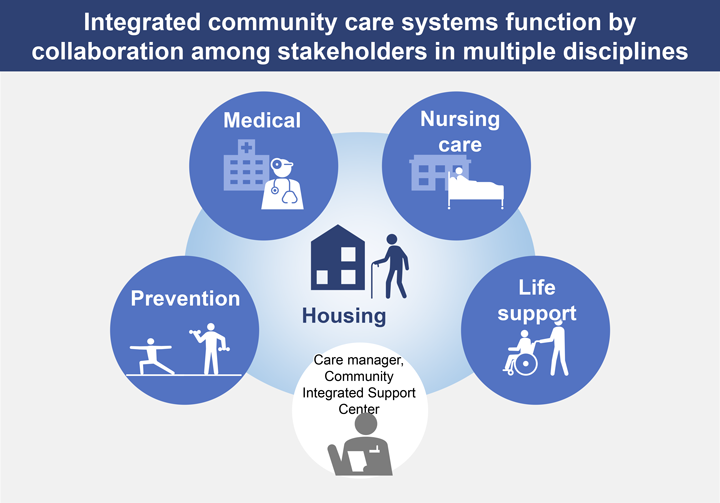Featured customer case
Lumada customer case code: UC-01981S
—Smooth collaboration among stakeholders involved in home care improves operational efficiency and the quality of care—
2023-09-13

Approximately 6.55 million people throughout Japan*1 have been certified as requiring long‑term care or support under the long‑term care insurance system. (In this document, such persons are referred to as long‑term care recipients.) By 2025, all of the so‑called “baby boomers” will be over 75 years old, so it is expected there will be a corresponding increase in the number of long‑term care recipients and in the number of people who wish to receive care at home.
This article describes a customer case in which a service created by Hankyu Hanshin Holdings, Inc. and Hitachi supports the sharing of information on home care. The resulting solution improved the operational efficiency for medical and long‑term care workers and improved the quality of home care.
Hankyu Hanshin Minatowa is a system that facilitates communication among stakeholders through information sharing using the cloud. The system has improved the operational efficiency of medical care and long‑term care and has improved the quality of home care in Japan, which has a declining birthrate and an aging population. Mechanisms for patients to enter the data to be shared with stakeholders can be added to this system, which can lead to ACP (Advance Care Planning). ACP raises the awareness of patients towards self‑management and enables them to select the treatment methods and long‑term care services that match their wishes.
Co‑creation with Lumada! Enhancing collaboration among stakeholders
Support for long‑term care recipients involves a variety of stakeholders, including their families, relevant medical institutions, care managers who consider various long‑term care services, and business offices that provide long‑term care services.
Care services that support long‑term care recipients take many forms, including those providing life support and rehabilitation services in care facilities, and home‑based services (such as visits by home carers, visits by nursing staff, and day care). In particular, the use of home care services is expected to increase as the number of long‑term care recipients who want to live in their homes increases.
To provide fine‑grained responses to the diverse requests, we first need to secure the human resources needed for long‑term care. However, the declining birthrate in Japan has become a serious social problem, and the decline in the working population is progressing faster than was earlier predicted. For this reason, it is not enough just to secure the human resources, we also need to provide the long‑term care services efficiently.

In home care, appropriate management of the health status of the long‑term care recipients is crucial. Digitizing relevant information and sharing it among stakeholders can lead to more appropriate and better quality care. Such information can include not only the daily information about long‑term care recipients (such as their body temperature and blood pressure, whether the person has an appetite, and their worries and anxieties) but also diagnostic and dosage information from medical institutions and information about the care services currently being received.
Hitachi supports the sharing of information to provide optimal long‑term care services while protecting the privacy of long‑term care recipients. When the medical and care data of long‑term care recipients is aggregated and managed appropriately, the data can be securely shared anytime, anywhere, and among a variety of stakeholders from multiple disciplines. When data sharing achieves smooth collaboration among stakeholders, the time previously spent communicating by phone, fax, or paper documents can be used to care for the long‑term care recipients, improving the quality of their home care. By utilizing ICT (information and communication technology), we can provide long‑term care recipients and their families with peace of mind and satisfaction.
By 2025, the baby boomer generation will be over 75 years old. In preparation, the national and local governments and various organizations are promoting the construction of integrated community care systems so that even if medical care or long‑term care is required, the care recipients can continue to live independently in their familiar communities as much as possible. Utilizing regional ties makes it possible to respond to social issues such as the decrease in the working population due to the declining birthrate and the increase in the number of people who wish to receive care at home.

For an integrated community care system to function, stakeholders from multiple disciplines need to work in collaboration. The higher the number of people involved, the more benefits we can expect from using ICT to link those people.
The following page describes an example of how using the cloud to share information related to long‑term care recipients improved the efficiency of administrative work in medical and long‑term care sites and improved the quality of home care.